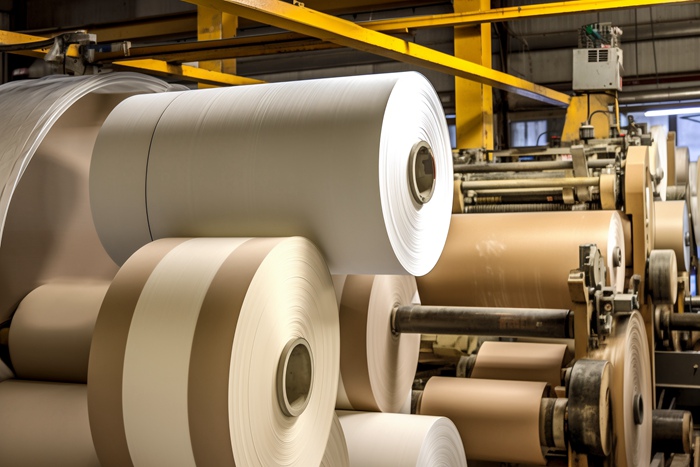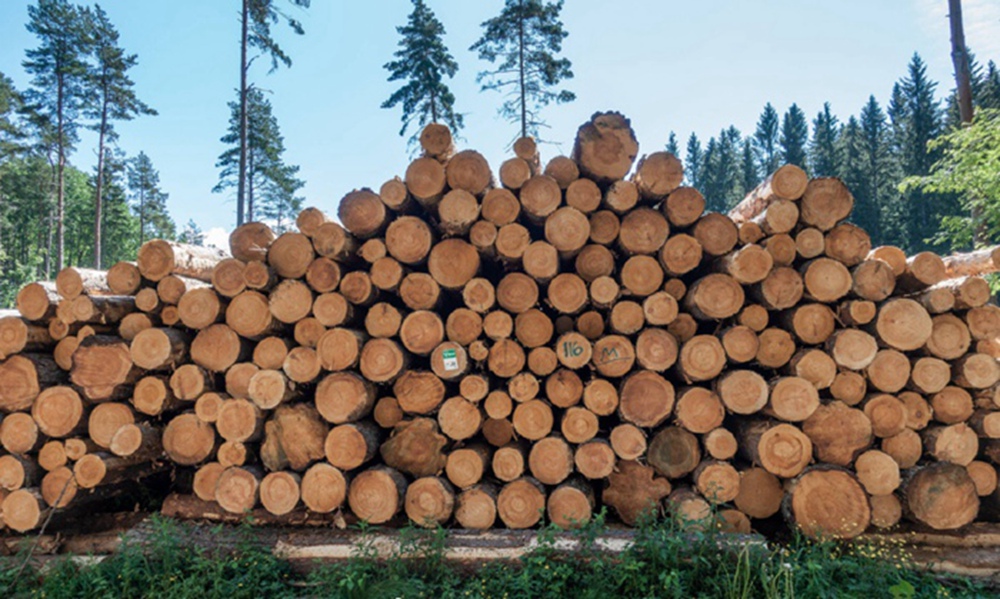Abstract
Dry strength agents are indispensable additives in the pulp and paper industry, specifically engineered to enhance the mechanical properties of paper under dry conditions. This article provides a rigorous technical analysis of dry strength agents, focusing on their chemical composition, molecular interaction mechanisms, application methodologies, and performance optimization strategies. The discussion excludes broader topics such as wet strength agents or surface sizing chemicals to maintain a laser focus on dry strength enhancement.
- Chemical Classification and Molecular Design
Dry strength agents are water-soluble polymers categorized by their chemical structure, charge characteristics, and molecular weight. Their efficacy depends on their ability to interact with cellulose fibers through hydrogen bonding, electrostatic attraction, and physical entanglement.
1.1 Starch-Based Agents
– Cationic Starches: Synthesized by introducing quaternary ammonium groups (e.g., via reaction with 3-chloro-2-hydroxypropyltrimethylammonium chloride) onto the starch backbone. The degree of substitution (DS) typically ranges from 0.02 to 0.1, balancing charge density and solubility.
Mechanism: Electrostatic adsorption onto negatively charged cellulose fibers (zeta potential: -10 to -30 mV in neutral pH) enhances retention and fiber-fiber bonding.
Molecular Weight: 10⁴–10⁶ Da; higher molecular weights improve bridging effects but reduce solubility.
– Oxidized Starches: Produced via oxidative cleavage of starch chains using agents like sodium hypochlorite or hydrogen peroxide. Introduces carboxyl (-COOH) and carbonyl (-C=O) groups, reducing retrogradation and improving film-forming ability.
Key Parameters: Carboxyl content (0.5–1.5%), viscosity (50–500 cP at 5% concentration).
– Enzyme-Modified Starches: Hydrolyzed using α-amylases or glucoamylases to reduce molecular weight, enhancing penetration into fiber cell walls.
1.2 Synthetic Polymers
– Polyacrylamides (PAM):
– Anionic PAM: Contains carboxylate groups (-COO⁻) from copolymerization with acrylic acid. Effective in systems with cationic promoters (e.g., alum).
– Cationic PAM: Incorporates quaternary ammonium monomers (e.g., [2-(methacryloyloxy)ethyl]trimethylammonium chloride). Charge density: 0.5–4 meq/g.
– Non-ionic PAM: Relies on hydrogen bonding; less efficient but compatible with high-salinity systems.
– Carboxymethyl Cellulose (CMC): Synthesized by reacting cellulose with chloroacetic acid. DS ranges from 0.4 to 1.2; higher DS increases solubility but reduces viscosity.
1.3 Hybrid and Bio-Based Agents
– Starch-PAM Graft Copolymers: Combines starch’s biodegradability with PAM’s high strength. Synthesized via free-radical polymerization using ceric ammonium nitrate as an initiator.
– Nanocellulose: TEMPO-oxidized cellulose nanofibrils (diameter: 3–20 nm) enhance strength via nanoscale reinforcement and increased bonding surface area.
- Mechanisms of Fiber-Fiber Bonding Enhancement
2.1 Hydrogen Bonding Dynamics
Cellulose fibers possess hydroxyl groups (-OH) that form intermolecular hydrogen bonds (bond energy: ~5–30 kJ/mol). Dry strength agents amplify this bonding via:
– Direct Participation: Agents with hydroxyl, carboxyl, or amide groups form additional H-bonds between fibers.
– Fiber Surface Plasticization: Starch and CMC plasticize fiber surfaces, increasing contact area and bond density.
2.2 Electrostatic and Van der Waals Interactions
– Cationic Agents: Neutralize anionic charges on fibers (Schulze-Hardy rule), reducing repulsion and enabling closer fiber proximity.
– High-Molecular-Weight Polymers: Entangle fibers via van der Waals forces (F = k/r⁶, where r = intermolecular distance).
2.3 Bridging and Network Formation
– Bridging: Polymers > 500 kDa span multiple fibers, creating a three-dimensional network. Bridging efficiency depends on polymer conformation (coiled vs. extended).
– Fiber Alignment: Shear forces during paper formation align fibers; polymers with shear-thinning rheology optimize alignment.
- Application Technologies and Process Integration
3.1 Wet-End Addition
– Dosage Optimization: Typical dosages: 0.1–2.0% (w/w, based on dry fiber). Overdosing (>2.5%) causes flocculation, impairing formation.
– Retention Aids: Dual polymer systems (e.g., cationic starch + anionic PAM) improve retention via charge patch mechanisms.
– pH Control: Cationic agents perform best at pH 6–8; anionic agents require pH <5 (with alum as a fixative).
3.2 Surface Sizing with Dry Strength Agents
– Size Press Application: Starch solutions (4–12% solids) are applied at 50–70°C. Pick-up: 1–4 g/m².
– Film-Forming Additives: Styrene-acrylate copolymers (Tg: 20–40°C) enhance surface strength without compromising bulk properties.
3.3 Spray and Foam Application
– Spray Systems: Atomized polymer solutions target specific sheet regions (e.g., paperboard plies).
– Foam Application: Reduces water content in coating, minimizing fiber swelling.
- Performance Metrics and Testing Protocols
4.1 Strength Testing
– Tensile Index (N·m/g): Measured via TAPPI T494. Dry strength agents typically increase tensile index by 10–40%.
– Burst Index (kPa·m²/g): TAPPI T403. Correlates with fiber bonding strength.
– Scott Bond (J/m²): Internal bond strength measured via TAPPI T569.
4.2 Structural Analysis
– SEM Imaging: Reveals polymer distribution and fiber-polymer interfaces.
– AFM: Quantifies nanoscale adhesion forces between fibers.
4.3 Rheological Characterization
– Dynamic Shear Rheometry: Measures polymer-fiber interactions under shear (storage modulus G’, loss modulus G”).
- Challenges and Advanced Solutions
5.1 Environmental and Regulatory Constraints
– Biodegradability: Synthetic PAMs (half-life >180 days) face scrutiny; bio-based alternatives (e.g., chitosan, lignosulfonates) are emerging.
– Wastewater Load: High COD from starch requires enzymatic pretreatment or anaerobic digestion.
5.2 Performance Limitations
– Hydrophobicity Trade-off: Excessive dry strength agents reduce water absorbency (critical for tissue grades).
– Filler Interference: Calcium carbonate fillers compete with fibers for polymer adsorption.
5.3 Innovations in Polymer Design
– Dual-Functional Monomers: Acrylamide derivatives with UV-reactive groups enable post-treatment curing.
– Stimuli-Responsive Polymers: pH- or temperature-sensitive agents adapt to process conditions.
- Case Studies: Technical Applications
6.1 Lightweight Packaging Papers
– Challenge: Improve tensile strength without increasing basis weight.
– Solution: 0.8% cationic starch (DS 0.05) + 0.2% anionic PAM (12 MDa). Result: 25% tensile increase, 5% density reduction.
6.2 High-Speed Tissue Machines
– Challenge: Prevent dusting during creping.
– Solution: Surface-applied oxidized starch (carboxyl content 1.2%) at 2 g/m². Outcome: Scott Bond increased by 30%.
- Future Directions
– Nanocomposites: Graphene oxide (0.1–0.5% loading) enhances dry strength via π-π interactions with lignin.
– Enzyme-Aided Systems: Cellobiohydrolases pre-treat fibers to expose hydroxyl groups for better polymer adhesion.
– Machine Learning: Predictive models optimize polymer selection based on fiber morphology and process parameters.
Conclusion
Dry strength agents are a cornerstone of modern papermaking, leveraging advanced polymer chemistry and colloidal science to transform cellulose networks into high-performance materials. By mastering the interplay of molecular design, application engineering, and process control, paper technologists can tailor dry strength agents to meet exacting industrial demands. Future innovations will hinge on sustainable chemistries, nanotechnology integration, and data-driven optimization, ensuring the continued relevance of paper in an increasingly digital world.


